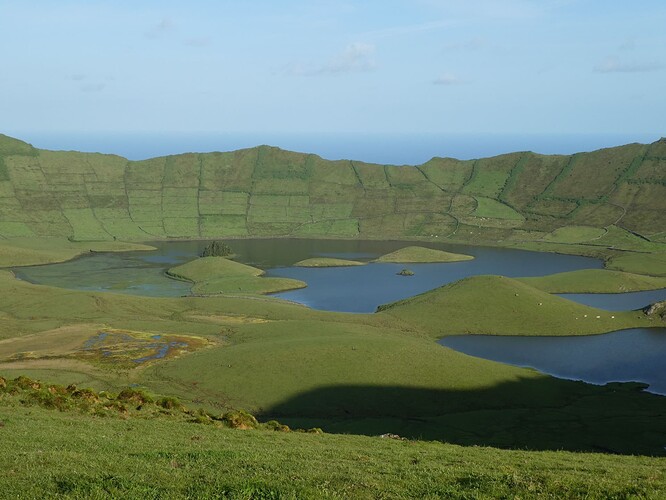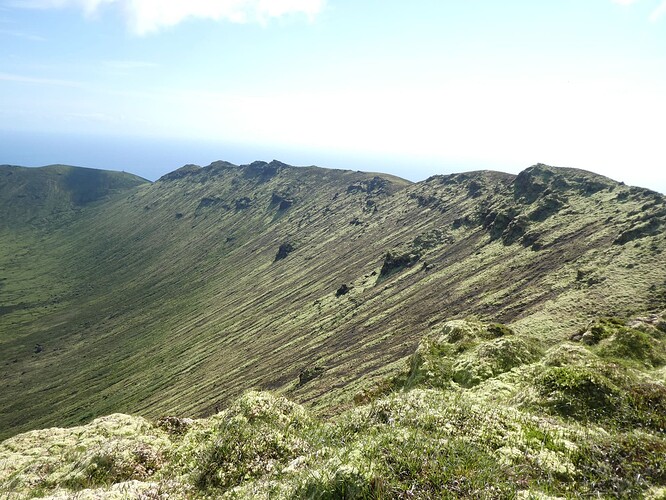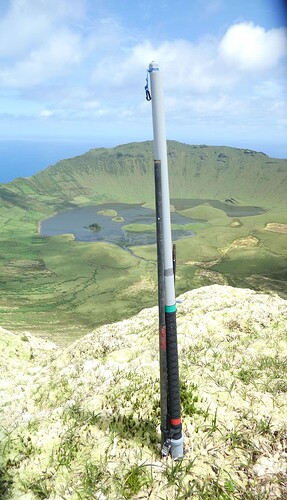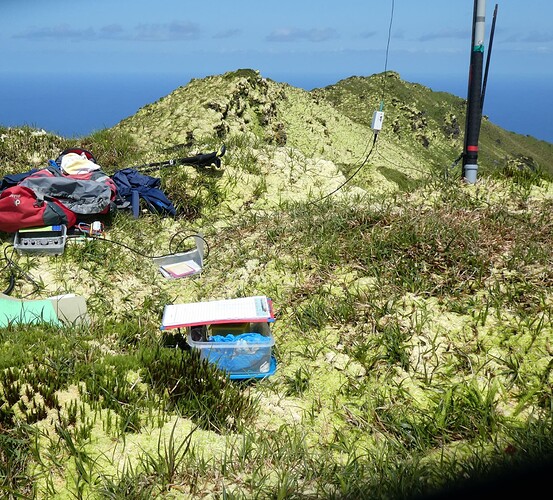Immediately after my stay in Madeira with three SOTA activations, I recently had the Azores as my next destination.
The Azores consist of 9 inhabited islands that belong to Portugal, but are autonomous. They extend over 600 km and are already a third of the way from mainland Europe to the USA. All islands have an airfield. In terms of weather, the so-called Azores high is well known, and it often radiates as far as Central Europe. However, it rarely occurs because the archipelago is usually at the mercy of the pitfalls of the Atlantic weather.
Two years ago I first learned about and appreciate this group of islands of volcanic origin. I had to leave out the two most western islands. This year I really wanted to go to the northwestern and smallest island of Corvo. There I had my eye on the only summit CU/CV-001, that had not yet been activated. Corvo consists of a 300 m deep and 700 m high crater of an extinct volcano. The said summit is located at the highest point of the crater rim.
I initially landed in the Azores in rainy weather, which improved significantly the next day. Corvo welcomed me with sunshine and light clouds. I took a taxi to the lowest point of the crater rim in order to be able to estimate the ascent time to the summit over 2.5 km and 160 meters in altitude along the crater rim for the alert data. Due to the deep and moist moss, I initially estimated a 3 hour walk. Due to the promising weather forecast, I planned activation for the next day. I set off the next day under a wonderfully blue and cloudless sky after the taxi took me back to the starting point.
I could hardly believe my luck with the weather and enjoyed the panoramic view to the fullest. As expected, my progress along the crater rim was slow. The best progress was still in the gullies between the moss pads, with constant uphill and downhill movements. Otherwise you would have sunk knee-deep in places. After about 2 hours of walking, I already had my destination in sight when a thin stick caught my eye from a distance at the summit. I was able to easily attach my mast to this rusted pipe.
As an antenna, I had a self-made ground plane for 20m and 40m, which I can easily adapt to other bands using the tuner on my KX2. The conds were anything but exhilarating, but around 20 QSOs (SSB and CW) came into the log as CT8/OE5FSM/p, so the initial activation went smoothly. Unfortunately OE was not there.
I was compensated by the fantastic weather, which you absolutely cannot expect in the Azores. As a descent route over 700 meters in altitude, I chose the direct route down to the coast. I didn’t want to do the “Moss Route” again.
Unfortunately, the name of a slightly lower secondary peak is given in the SOTA database. I have already suggested a change to the SOTA MT. However, GPS coordinates and locator are correct.
Due to the unpredictable weather conditions, visiting Corvo was by far the riskiest part of my trip. So the stay and the activation became pure enjoyment.
https://corvotravel.pt/ is intended to reinforce the impression.
Franz / OE5FSM



